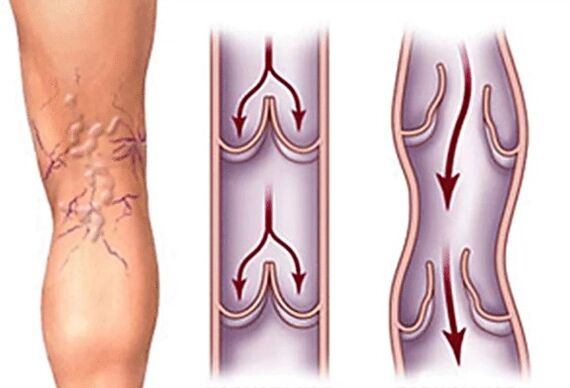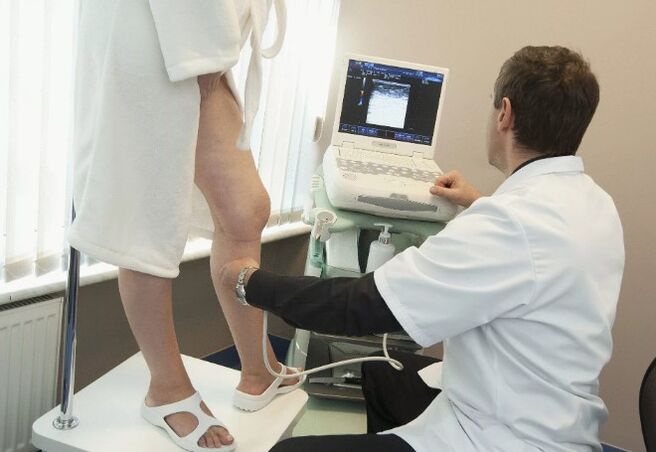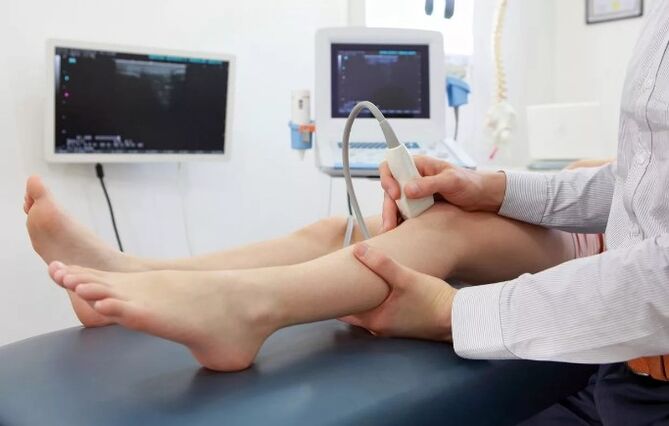Vascular diseases are quite a common phenomenon that can happen to everyone. Like many other diseases, the varicos has its own stage, and if the initial manifestations of the pathology are more often inconvenient, the final stage is dangerous not only to health but also to human life. In order to avoid serious consequences, such as disability and others, the main features, development and way of preventing complications should be familiar with the main features of varicose manifestations.
The concept of varicos
Varicosis is a disease that affects the muscle and connective tissue layer of the vascular wall and their valve device. As a result, the veins expand, blood circulation in this place, the blood reverse blood through the blood vessels.
Most people know about varicose veins on their feet. But there are also other localizations of the disease, as blood vessels can affect any part of the body.
Most often in medical practice, the veins of the pelvic organs (bladder, uterus), perineum (scrotum, rectum, vagina) are diagnosed. However, the clinical image of the disease depends on the site of damage and the stage of pathology.
Varikoos veins in men and its characteristics
At a young age (average 10-12 years old), a young man can encounter a disease such as the scrotum.In science, this condition is called "varicocele". This can be found during a simple examination and palpation of the scrotum. Clinically varicocele manifests itself with a number of symptoms that include:
- pain on the side or half of the affected scrotum, increasing after exercise;
- severity in the testicles;
- infertility.
However, Varicocele cannot show itself at all and can be identified by the planned examination.
This disease distinguishes between three stages:
- A slight extension of the veins, which is visible when the patient performs the valsalva pattern (tension);
- The veins are visible and felt in the patient's relaxed condition;
- The ships change sharply, convincing, filled with blood. The size of the testicular testicles is reduced and has a test consent.
In adult patients, the veins of the scrotum are often diagnosed when the treatment of children is complained of. There is a theory that varicocele affects fertility (the ability to reproduce offspring) by increasing the temperature in the scrotum, which adversely affects the testicles and spermatogenesis. In fact, this type of varicosis of men is often combined with damage to the pots of the legs. 
Diagnosis of the disease is simple.As mentioned earlier, you can suspect varicose veins of the scrotum during a normal examination and then ultrasound the vascular beam should be done to confirm. As a treatment method, only surgical intervention is used: the doctor is simply a varicose veins, and blood circulation is performed according to anastomoses. However, this should be kept in mind that, like the varicos, the operation does not guarantee complete healing. In fact, the disease is repeated in many cases.
Characteristics of varicoos in women
Varico veins in the pelvis.For women, this disease is the risk of fetal relationships. As mentioned above, varicose veins can occur in any part of the body, including the pelvic area. During pregnancy, the situation worsens as the abdominal cavity vessels are extended as the fetus grows, and secondly, the uterus, whose size increases, exerts pressure on them. Due to these processes, placental blood circulation is disturbed, which could lead to rejection. In this case, of course, the likelihood of losing a child increases significantly.
Sometimes the varicose veins debut during pregnancy.Before the concept, a woman did not suspect she was prone to the disease. However, during the period of tolerance of the fetus, the female body is subjected to certain body changes that can provoke certain diseases, including varicos. Such changes are as follows:
- Changing the hormonal background;
- increase in body weight;
- Anatomical changes.
In addition, the number of births is directly proportional to the search for later pathology. In addition to the pool varicos, other complications may occur during pregnancy:
- Cracks of uterine veins during childbirth;
- thromboflebitis;
- dermatitis, trophy ulcers;
- Venous deficiency.
Thus, pregnancy is a factor that, unfortunately, can provoke the veins of varicose veins because it contributes to the faster development of the pathology and requires preventive measures with a certain diagnosis.
Other consequences of the varicose
Thrombophlebitis.Often, varicose veins and venous deficiency lead to inflammation of the walls of the blood vessels - flee from the formation of blood clots - thromboflebitis. Basically, this disease affects the blood vessels of the lower limbs, which results in severe pain in the affected areas of the legs. We observe the symptoms of the general inflammatory reaction: high temperature, weakness. If treatment is not started on time, the process applies to other veins and the patient's condition deteriorates. 
Thromboembolia.Thrombophlebitis and varicose veins are in the presence of serious complications - thromboembolia. The reason for this is the separation of the blood clot from the wall of the vessel, which is blocked by the most important packages of the heart, light and brain.
Initially, a blood clot can be on the leg, for example (this is the most common). However, from the lower limb, it is forced to move through the blood flow to different parts of the body. As a result, falling into the smaller branches of the vascular system causes the blood clot to collapse, which results in the blood circulation of the place interferes with ischemia and then the appearance of necrosis. From a clinical point of view, this is presented by a heart attack, stroke or lung and fat (lung arterial thromboembolia), which often ends death.
Patients from such diagnosis should only be treated in an intensive and intensive care unit. In this case, the patient's assistance measures should be taken immediately - only in this case the patient has a chance to salvation.
Dermatitis.Most often, this unpleasant complication occurs on the inner surface of the lower leg, manifested as a number of symptoms that include:
- thinning of the skin;
- epidermal pigmentation;
- itching of the affected area;
- The appearance of bubbles that tend to be "open", leading to the skin layering;
- Violation of the sensitivity of the affected area.
Dermatitis does not heal well, barely treatable. The presence of thrombus involves the occurrence of trophy ulcers - stages of skin death. In the future, an infection may join ulcers that may result in confusion.
Telengioectasia.This cosmetic error, which looks like vascular stars, is a consequence of cracks in small surface capillaries and a sign of the initial phase of varicose veins.
Hemorrhoids.This is a very common disease - nothing more than varicose veins of the rectum. This is declared by the formation of so -called bleeding nodes that are often able to go out, break and inflammation. This causes a significant concern for patients.
Diagnostic methods

The simplest and cheapest way to detect the varicos and its complications are ultrasonic doppler veins of the lower limbs. In the study process, we evaluate bloodstream, blood vessels and the condition of the walls as a whole. Thus, the above diagnosis promotes the detection of blood clots. In addition, all varicose patients should hand over Doppler before any surgical intervention to exclude the presence of blood clots to avoid complications.
In cases where the patient is suspected of suspected venous deficiency or thrombosis, doctors suggest that X-ray-controlled flebogography (a method used to assess the work of veins).
To do this, a special serum - albumin is introduced into the vessel and then takes an X -Súr, on which the pulses from veins are registered. Then the result is evaluated.
You can fill the test with computed tomography with the contrast of military booters. This method is the most accurate but expensive. Nevertheless, this method of diagnosis not only allows the identification of vascular diseases but also to assess the condition of other body systems and tissues.
Treatment of complications
Treatment of the consequences of the varicosity depends on the current state of the patient and directly on the type of complication. Thus, thromboflebitis requires a prescription for blood width anti -inflammatory drugs, antibiotics, and painkillers. Once the inflammatory process disappears, physiotherapy, hirudotherapy (treatment with leeches) is recommended. Surgery can be recommended as an etiotropic treatment - losing and removing the vein.
Trophic ulcers are treated poorly.The surgeon removes areas of necrosis, prescribes the bandages with antiseptic and ointments. Together with these manipulations, antibacterial therapy and bloodstream are performed in Vienna.
Vascular stars are eliminated by sclerotherapy, that is, so called "glue" of the lumen of the veins. After the procedure, wearing a compression canvas is prescribed to prevent relapse.
Other complications such as hemorrhoids, varicocele and pelvic varicoosis veins can only be cured after a thorough examination and identify the affected vein.
Forecast

In the case of lung artery thromboembolism, we observe unfavorable prognosis in which the number of deaths reaches 75%. In addition, thromboflebitis with trophy injuries to skin has no formation of the establishment, as such a disease occurs in persistent changes in blood vessels and the risk of infection also increases, leading to a number of complications. The consequences of the disease can often lead to the patient's disability.
Signals to Insurance of Patient Disabilities:
- the presence of thrombosis and the transfer of thromboembolia;
- Returning Erysipelas;
- post -romboflitis syndrome;
- Ineffective surgical treatment.
Most often, disability is given to patients whose last stage of varicose veins has permanent impairment.























